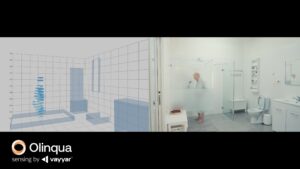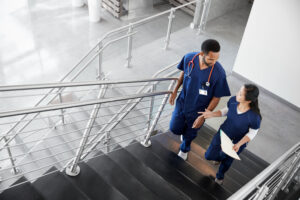The origins of the digital twin
On 11th April 1970, Apollo 13 launched into space. You’ve no doubt heard what happened next.
The words ‘Houston, we have a problem’ have been immortalized in history and what followed was a feat of astronomical propositions – resolving technical malfunctions on a spacecraft 200,000 miles away.
Luckily for the astronauts aboard the ailing flight, NASA kept an exact replica – a ‘twin’ – of Apollo 13 on earth. This twin was used to troubleshoot, test and eventually solve the problems occurring many miles away, allowing the crew to return safely to earth.
The method that NASA used to great effect has since been expanded into the digital world, to what is known as Digital Twin, and this technology has made its way firmly into the healthcare space, where its application stands to change the face of the industry forever.
Since the emergence of digital healthcare, technology has been applied to accelerate, transform and empower Australian hospitals and its workforce, which in turn should result in flow on outcomes such as improving patient outcomes, increasing life expectancy and reducing costs.
And while the idea of a digital twin isn’t novel, especially in fields like manufacturing, in the realm of healthcare it is ushering in an entirely new way to manage patient and hospital data.
What is a digital twin?
A digital twin is an exact virtual replica of either a physical item (for example an engine, or a person), or a system (such as a manufacturing process or a hospital workflow) that reflects the current status of that item or system.
The depiction of ‘current status’ is achieved through real-time, real-world data, which is continuously fed through from embedded sensors and software.
The result – a ‘twin’ that can be analyzed, tested, challenged and assessed in all manner of ways.
The benefit – a unique digital asset with the ability to make informed decisions, based on real data, without any impact on its real-world counterpart.
Identical in every aspect, a digital twin is the perfect vehicle for the healthcare system, where delicate physical beings (like organs, and eventually entire human bodies) can be expertly assessed before action is taken, and delicate ecosystems (like hospital management systems) can be carefully managed for optimal patient and staff outcomes.
How hospitals benefit from a digital twin
A digital twin has the ability to immediately begin revolutionizing clinical processes and hospital management.
By creating a Digital Twin of a hospital, the digital consolidation of people, environment and infrastructure is enabled. This includes everything from operational strategies and capacities to staffing and care models.
Actionable events like bed shortages, spreading of germs, staff schedules, and operating room availability can be predicted, thanks to the increased awareness and oversight that digitization provides.
AI algorithms can be used to analyze the virtual model created to improve a wide variety of common hospital issues – all to improve patient care, increase cost efficiencies, and support staff performance.
But the real benefit comes from the ability to test all these potential changes and their impact on the overall system in a safe and risk-free environment – removing the immediate and real-world risks.
Getting started with Digital Twins
Every hospital has extensive access to data they’re already collecting, from building systems to connected devices that can be utilized to begin painting a digital twin picture, that AI or machine learning models can learn from and start improving.
As with so many innovations – it’s getting started that’s the hardest part.
Here at Olinqua, our team of digital innovators, clinicians, industry experts and technicians have supported up to 70 Australian hospitals with the latest communications and collaboration integration technology.
Our Digital Twin capabilities are providing invaluable benefits to administrators, engineers, care providers, leadership teams and beyond.
We invite you to find out more – why, what, how – of a Digital Twin hospital through our free demo.



